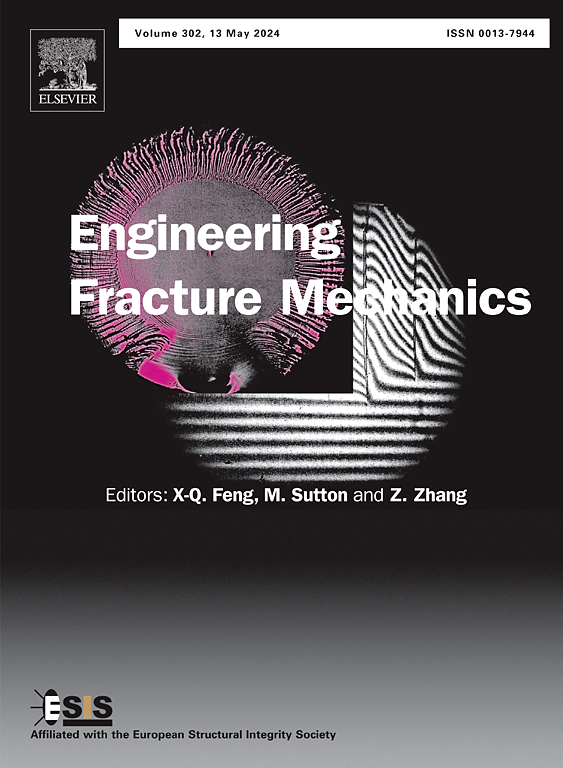An adaptive SBFEM based on a nonlocal macro/meso damage model for fracture simulation of quasibrittle materials
IF 5.3
2区 工程技术
Q1 MECHANICS
引用次数: 0
Abstract
An adaptive scaled-boundary finite element method (SBFEM) is proposed to simulate the crack damage and propagation of quasibrittle materials on the basis of a nonlocal macro/meso damage model. The mesoscopic damage is defined by the deformation of the material bond between the two pairs in the model. First, the structure is discretized via an arbitrary polygon–quadtree mesh. During the damage propagation process, the damage value in each damaged element is determined by the model. Once the damage of an element reaches the damage threshold, the damaged element automatically undergoes mesh refinement until the refined mesh size meets the minimum mesh size requirement. This refinement strategy does not require manual intervention and is automatically implemented by computational software, greatly enhancing the computational efficiency of crack simulation. The transition elements between the refined area and the original elements are discretized using elements with a 2:1 size ratio, ensuring the high quality and efficiency of the automatically subdivided mesh. The nonlinear damage problem is solved iteratively via the arc-length method. The accuracy and efficiency of the proposed algorithm are verified through three numerical examples. The results also indicate that our method is not sensitive to mesh configurations, as commonly encountered in classic local damage mechanics. Moreover, increasing the mesh density results in smoother crack paths and higher computational accuracy.
基于非局部宏观/介质损伤模型的自适应 SBFEM,用于准脆性材料的断裂模拟
在非局部宏观/介观损伤模型的基础上,提出了一种自适应比例边界有限元法(SBFEM)来模拟准脆性材料的裂纹损伤和扩展。介观损伤由模型中两对材料键的变形定义。首先,通过任意多边形四叉树网格对结构进行离散化。在损伤传播过程中,每个受损元素的损伤值由模型确定。一旦某个元素的损伤值达到损伤阈值,受损元素就会自动进行网格细化,直到细化后的网格尺寸满足最小网格尺寸要求。这种细化策略无需人工干预,由计算软件自动执行,大大提高了裂纹模拟的计算效率。细化区域与原始元素之间的过渡元素采用尺寸比为 2:1 的元素离散化,确保了自动细分网格的高质量和高效率。非线性损伤问题通过弧长法迭代求解。通过三个数值实例验证了所提算法的准确性和效率。结果还表明,我们的方法对网格配置并不敏感,这在经典局部损伤力学中很常见。此外,增加网格密度可获得更平滑的裂纹路径和更高的计算精度。
本文章由计算机程序翻译,如有差异,请以英文原文为准。
求助全文
约1分钟内获得全文
求助全文
来源期刊
CiteScore
8.70
自引率
13.00%
发文量
606
审稿时长
74 days
期刊介绍:
EFM covers a broad range of topics in fracture mechanics to be of interest and use to both researchers and practitioners. Contributions are welcome which address the fracture behavior of conventional engineering material systems as well as newly emerging material systems. Contributions on developments in the areas of mechanics and materials science strongly related to fracture mechanics are also welcome. Papers on fatigue are welcome if they treat the fatigue process using the methods of fracture mechanics.

 求助内容:
求助内容: 应助结果提醒方式:
应助结果提醒方式:


